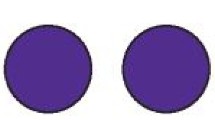Abstract
Source of funding This research did not receive any specific grant from funding agencies in the public, commercial, or not-for-profit sectors
Type of study/design Randomised controlled trial (RCT) with parallel design.
Subjects This RCT was conducted at the Clinic of Fixed and Removable Prosthodontics and Dental Material Science, Centre of Dental Medicine, University of Zurich, Zurich, Switzerland. Ten patients, six women and four men, with a mean age of 62 years and an age range of 49-77 years, requiring posterior tooth-supported 3-unit fixed partial dentures (FPDs) were included in this RCT. The abutment teeth were six molars and six premolars in the maxilla and five molars and three premolars in the mandible. The patients fulfilled the following inclusion criteria: they all were >18 years, with a full mouth plaque score <25% and a full mouth bleeding score <25%. They all needed a posterior tooth-supported FPD, in which the third molar was not an abutment tooth. Only abutments with no extensive pretreatment were eligible. Adjacent and opposing teeth should be healthy or adequately restored.
Treatment Three intraoral digital scanning systems (Lava C.O.S.; 3M [Lava], iTero; Align Technology Inc [iTero], Cerec Bluecam; Dentsply Sirona [Cerec]) and conventional light/regular body polyether impression in a stock tray were made on each of the included participants by the same clinician. The opposing arch impression was made in alginate. The sequence of the four techniques was computer generated and concealed in opaque sealed envelopes. Three calibrated experienced clinicians were involved in the treatment. They followed the published guidelines for preparing abutments that receive CAD/CAM ceramic FPDs. After interim prosthesis removal and double retraction cord application, the digital or the conventional impression procedure was started as dictated by the random sequence. Scans were done according to the manufacturer's guidelines, whereby Lava and Cerec required powdering of the teeth by titanium oxide and iTero did not.
Main outcome Time needed for obtaining a scan or an impression was calculated. For digital scans it consisted of the time required for powdering, scanning and occlusal registration, while in conventional impression it started from the beginning of impression mixing till tray removal. The number of impression or scan remakes required until results fulfilling the quality criteria were obtained was also recorded. Visual analogue scale (VAS) was used to rate the perception of both, clinicians and patients for the procedures. Patients were asked to rate their comfort with the procedure, while clinicians rated both difficulty and comfort, where 0 indicated uncomfortable and simple and 100 difficult and comfortable. Subjective assessment of the time as judged by the clinicians and the patients was also reported.
Main results Generally speaking, conventional impression was better than the three complete arch digital scans, regarding time required in seconds, difficulty for clinicians, comfort and time perception of both patients and clinicians. Number of remakes were highest in iTero (7), followed by Lava, conventional impression and finally Cerec (0). The time required for each technique differed significantly Polyether = 658 (95%CI 528-782) Cerec = 1776 (95%CI 804-2386) iTero = 1107 (785 - 2091). A significant difference was found neither among the three digital impressions, nor between the conventional impression and Lava (μ = 1091, 95%CI [717-1465]). The same findings were reported regarding difficulty for the clinicians. A significant difference was reported between conventional impression (μ = 15, 95%CI [7-24]) and both Cerec (μ = 67, 95%CI [58-77]) and iTero (μ = 43, 95%CI [25-62]). No significant difference was reported among the studied techniques regarding patients' comfort and time perceptions of both clinicians and patients except for a difference in the patients' time perception of Cerec and conventional impression, where P = .035. Regarding the clinicians' comfort a significant difference was only found between conventional impression (μ = 82, 95%CI [69-94]) and Cerec (μ = 32, 95%CI [18-46]).
Conclusion Within the limitations of this RCT, it can be concluded that complete arch conventional impression is objectively less time consuming and subjectively preferred by both clinicians and patients when compared to digital scanning. Digital scanning techniques, requiring powdering, are more difficult for the clinicians than powderless ones and conventional impression.
This is a preview of subscription content, access via your institution
Access options
Subscribe to this journal
Receive 4 print issues and online access
$259.00 per year
only $64.75 per issue
Buy this article
- Purchase on Springer Link
- Instant access to full article PDF
Prices may be subject to local taxes which are calculated during checkout
Similar content being viewed by others
References
Joda T, Zarone F, Ferrari M. The complete digital workflow in fixed prosthodontics: a systematic review. BMC Oral Health 2017; 17: 124.
Kim R J, Park J M, Shim J S. Accuracy of 9 intraoral scanners for complete-arch image acquisition: A qualitative and quantitative evaluation. J Prosthet Dent 2018; 120: 895-903.
Ahlholm P, Sipilä K, Vallittu P, Jakonen M, Kotiranta U. Digital versus conventional impressions in fixed prosthodontics: a review. J Prosthodont 2018; 27: 35-41.
Abduo J, Elseyoufi M. Accuracy of Intraoral Scanners: A Systematic Review of Influencing Factors. Eur J Prosthodont Restor Dent 2018; 26: 101-21.
Yang Z R, Sun F, Zhan S Y. Risk on bias assessment: (2) Revised Cochrane risk of bias tool for individually randomized, parallel group trials (RoB2. 0). Zhonghua Liu Xing Bing Xue Za Zhi 2017; 38: 1285-1291.
Author information
Authors and Affiliations
Corresponding author
Rights and permissions
About this article
Cite this article
Sedky, A., Abd-Elwahab Radi, I. Limited evidence suggests complete arch digital scans are less time efficient than conventional impression. Evid Based Dent 21, 138–139 (2020). https://doi.org/10.1038/s41432-020-0143-1
Published:
Issue Date:
DOI: https://doi.org/10.1038/s41432-020-0143-1



